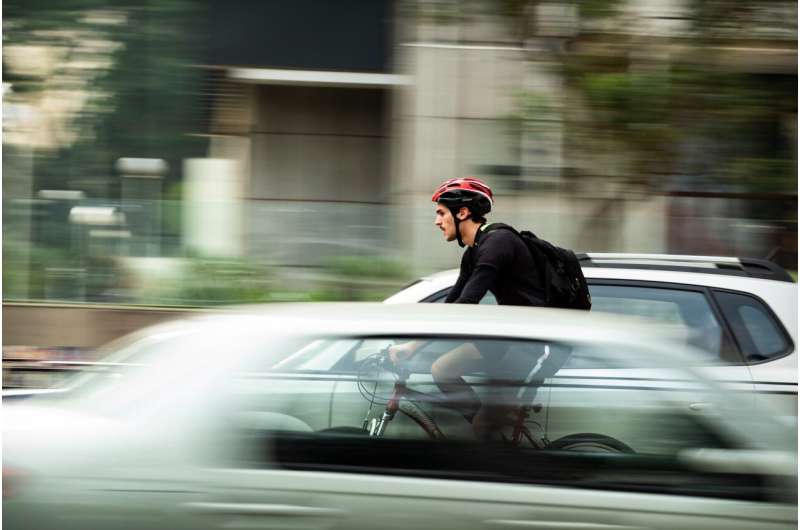To increase bike commuters, look to neighborhoods

People agree that bike commuting improves health, reduces air pollution and eases traffic, a recent survey suggests. But that wasn't enough to get most people to commute by bike.
The new research indicates that a person's neighborhood may play a large role in influencing the decision to commute by bike.
The study, published recently in the Journal of Transport and Land Use, could give city and regional planners new clues about how to design neighborhoods, streets and bike trails with active commuting in mind, said Yujin Park, lead author of the study and a doctoral candidate at The Ohio State University Knowlton School of Architecture.
"Bicycling contributes to urban vitality and, as a planner, I was interested in what the most influencing factors could be to make people be willing to choose a bicycle to commute," Park said. "We are interested in the urban factors that make a person ride a bicycle more."
The study found that people who live in high-density, mixed-use neighborhoods—the kinds of neighborhoods found in vibrant downtowns or near large college campuses—are more likely to commute by bike than their peers in suburban or rural areas.
Those findings held even in suburban neighborhoods residents considered "bike friendly." The study found that people who live in those neighborhoods might ride bikes for recreation or fun, but are less likely to commute to jobs or classes by bike than their peers who live in higher-density parts of the city.
The study was based on a survey of 1,200 people who commuted to Ohio State, one of the nation's largest public universities.
About 12.6 percent of those people classified themselves as bicyclists, and about 5.4 percent reported that a bicycle is their main mode of transportation to campus. People who lived in high-density areas were more than twice as likely to commute by bike as people in medium-density areas—and more than three times as likely to commute by bike as people in suburban areas.
Both bicyclists and non-bicyclists in the survey agreed that bicycling reduced environmental impacts of commuting, created health benefits and would save money, indicating that recognizing the benefits of bicycling is not a strong enough motivator to push non-bicyclists to start commuting on two wheels.
However, most bicyclists surveyed said they would commute by bike more frequently if they had access to more bike trails, bike-sharing opportunities and covered parking for their bikes at home or at work and school.
Non-bicyclists who lived in high-density neighborhoods appeared to be more concerned about safety—both from other vehicles and from crime—when traveling by bike than their peers who commute by bike.
Previous studies about bike commuting decisions have looked individually at commuters' attitudes about bike commuting and at their psychological perceptions about bike commuting. This research combines those attitudes and perceptions with neighborhood data.
"The conditional willingness to ride a bicycle to commute gradually decreases from high-density neighborhoods to low-density, single-family neighborhoods," Park said.
She said the findings indicate that if campus, city and regional planners want to increase the percentage of people commuting by bike, they might want to target public investment in protected bike lanes, bike paths and bike parking near downtown and campus areas.
Columbus, which won the U.S. Department of Transportation's first-ever Smart City Challenge grant, was awarded $50 million to improve mobility throughout central Ohio. Ohio State has been working with city leaders to increase sustainable transportation to, from and around campus.
"The people who live in those higher-density neighborhoods are the most likely to commute by bike," Park said. "Removing obstacles for them might make the most sense for where we invest our resources."
More information: Yujin Park, Gulsah Akar. Understanding the effects of individual attitudes and residential neighborhood types on university commuters' bicycling decisions. Journal of Transport and Land Use. DOI: dx.doi.org/10.5198/jtlu.2019.1259
Provided by The Ohio State University
















